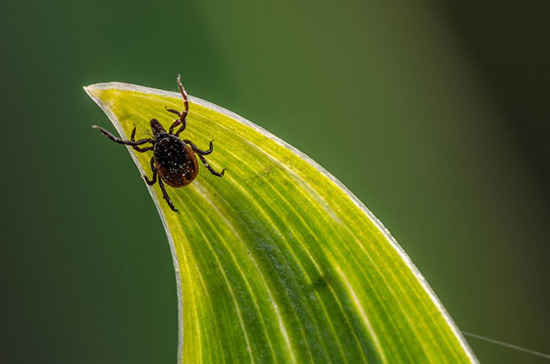外来蜱虫在美扩散:繁殖迅速、可以传播致命疾病

|
美国疾病控制与预防中心(CDC)发布警告称,一种名为亚洲长角蜱虫的外来物种正在美国东部多个州扩散,这种蜱虫不仅繁殖速度快,还以传播致命人类疾病著称。 CDC的副主任本·比尔德说:“还不知道本次发现的蜱虫及其扩散对整体公共健康和农业有何影响。在世界其他地区,亚洲长角蜱虫能传播多种在美国很常见的病菌。这种可以在人畜和环境中肆虐的蜱虫目前正在美国扩散开来,这让我们感到担心。” 2017年8月,美国人在新泽西州的一只绵羊身上首次发现亚洲长角蜱虫,随后扩散至弗吉尼亚、西弗吉尼亚和纽约等八个州。这种虫子最常出现在家畜身上,特别是狗和奶牛,鹿和郊狼等野生动物身上也会有。此外,已在两名美国人身上发现了这种蜱虫。 虽然CDC尚未在美国出现的蜱虫身上找到有害微生物,但人们已经知道,亚洲长角蜱虫会通过叮咬传播出血热等致命疾病。这种蜱虫的原生地是中国、韩国和日本等东亚国家,现已扩展到了澳大利亚和新西兰——由于其吸血量大,两国奶牛的产奶量会因此下降25%。 亚洲长角蜱虫能迅速扩散的原因是雌性蜱虫可以无性繁殖,从而找到大量宿主。人们一次有可能发现数千只亚洲长角蜱虫,甚至是在一个宿主身上。 CDC表示,他们正协同美国兽医、农业和公共健康专家评估这种新蜱虫的威胁。CDC称:“畜牧业者和宠物主人应和他们的兽医一起定期预防蜱虫,发现任何未知种类的蜱虫要向当地农业部门报告。”(财富中文网) 译者:Charlie 审校:夏林 |
The Centers for Disease Control is warning of an invasive tick species that is spreading in a number of eastern U.S. states. The tick, known as the Asian longhorned tick, can not only multiply quickly, but is known to transmit deadly diseases to humans. “The full public health and agricultural impact of this tick discovery and spread is unknown,” Ben Beard, a deputy director at the CDC, said in a statement. “In other parts of the world, the Asian longhorned tick can transmit many types of pathogens common in the United States. We are concerned that this tick, which can cause massive infestations on animals, on people, and in the environment, is spreading in the United States.” The Asian longhorned tick was first discovered on a sheep in New Jersey in August 2017. Since then, it has spread to Virginia, West Virginia, New York, and five other states. The tick has most often been found on domestic animals, especially dogs and cows, as well as wildlife such as deer and coyotes. But two humans have been found to be hosting it as well. Although the CDC has found no harmful germs in ticks collected in the U.S., bites from the Asian longhorned tick have been known to transmit deadly diseases such as human hemorrhagic fever. The tick, native to East Asian countries like China, Korea and Japan, has also spread to Australia and New Zealand, where they have been known to suck so much blood from cows that milk production can fall by 25%. The Asian longhorned tick can spread quickly because a single female tick is capable of reproducing without mating, which can result in massive host infestations. Thousands of ticks can be found at the same time, even on a single host. The CDC said that it’s working with veterinary, agriculture and public health experts in the U.S. to assess the threat posed by the new ticks. “Livestock producers and pet owners should work with their veterinarians to maintain regular tick prevention and report any unknown tick species to their local department of agriculture,” the CDC said. |













